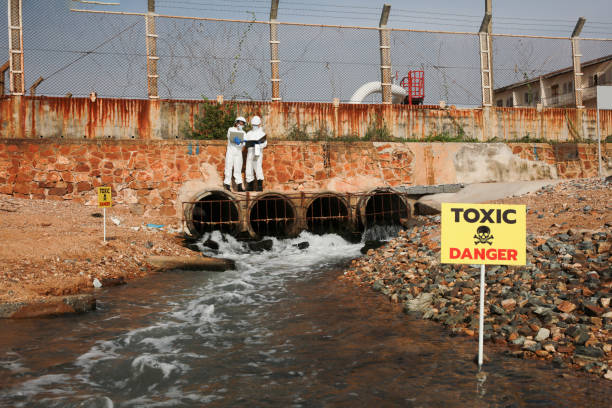According to a statement made by Union Minister of State for Jal Shakti Bishweswar Tudu to the Rajya Sabha, there is a concern for arsenic contamination in groundwater in 230 districts across 25 states, and fluoride contamination in 469 districts across 27 states. The Central Ground Water Board (CGWB) states that this contamination is primarily caused by natural factors, with minimal changes observed over time.
Operating under the Ministry of Jal Shakti, the CGWB diligently monitors groundwater quality, with a special emphasis on identifying and addressing arsenic and fluoride contamination. Through collaborative studies with esteemed institutions, we have discovered instances where contamination levels exceed the limits deemed safe by the Bureau of Indian Standards for human consumption.
Arsenic is found in a considerable number of districts, spanning across numerous states, while fluoride affects a significant number of districts in various states. In 2010, CGWB collaborated with the National Institute of Hydrology (NIH) to produce a report on the Mitigation and Remedy of Groundwater Menace. The objective of this report was to offer guidance and share potential solutions with relevant agencies.

Representative Stock Photo
A recent collaboration between CGWB and the Geological Survey of India (GSI) is aimed at studying groundwater contamination in eight states, namely Punjab, Haryana, Andhra Pradesh, Uttar Pradesh, Chhattisgarh, Jharkhand, Bihar, and Assam. The focus of this study is on arsenic and fluoride. It has been found that these contaminants have geogenic origins, meaning they naturally occur in the rock or soil matrix and enter groundwater through chemical processes.
Despite the available reports, there is limited conclusive evidence regarding the increase in contaminant concentrations over time. Tudu suggests that the rise in arsenic cases can be attributed to the 2015 revision of permissible limits by the BIS, which lowered it from 50 ppb to 10 ppb. Likewise, the increase in fluoride instances is believed to be connected to the increased number of monitoring points implemented over the years.

Arsenic, a naturally occurring element, can be highly toxic in its inorganic form, which is commonly found in groundwater as a result of geological processes. Prolonged exposure to it has been linked to an increased risk of cancer, skin lesions, cardiovascular problems, and possible neurological effects.

Fluoride, which is an anion derived from fluorine, is purposefully included in drinking water to promote dental health. However, it is important to note that high levels of fluoride can cause dental fluorosis, skeletal problems, potential neurological impacts, and disruption to the endocrine system.
In summary, it is important to note that heightened levels of arsenic and fluoride in groundwater can potentially endanger one's health. Thus, it is crucial to prioritize continuous monitoring and implement appropriate measures to guarantee the safety of drinking water sources. In conclusion, it is of utmost importance to address geogenic groundwater contamination. Collaborative efforts between government bodies and research institutions, such as the CGWB and GSI, are being undertaken to mitigate this issue. Maintaining a vigilant monitoring system, adhering to established standards, and conducting targeted studies are essential steps in ensuring the safety of water for human consumption.
Ⓒ Copyright 2023. All Rights Reserved Powered by Vygr Media.









